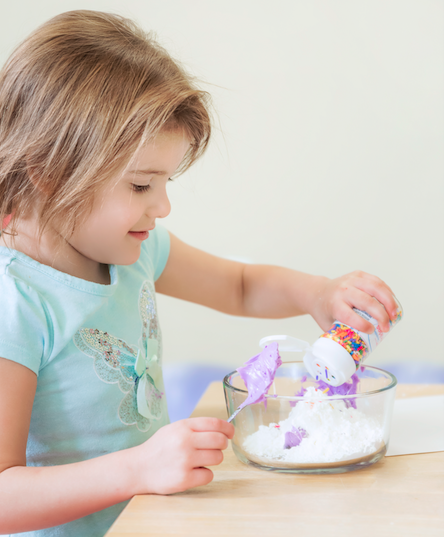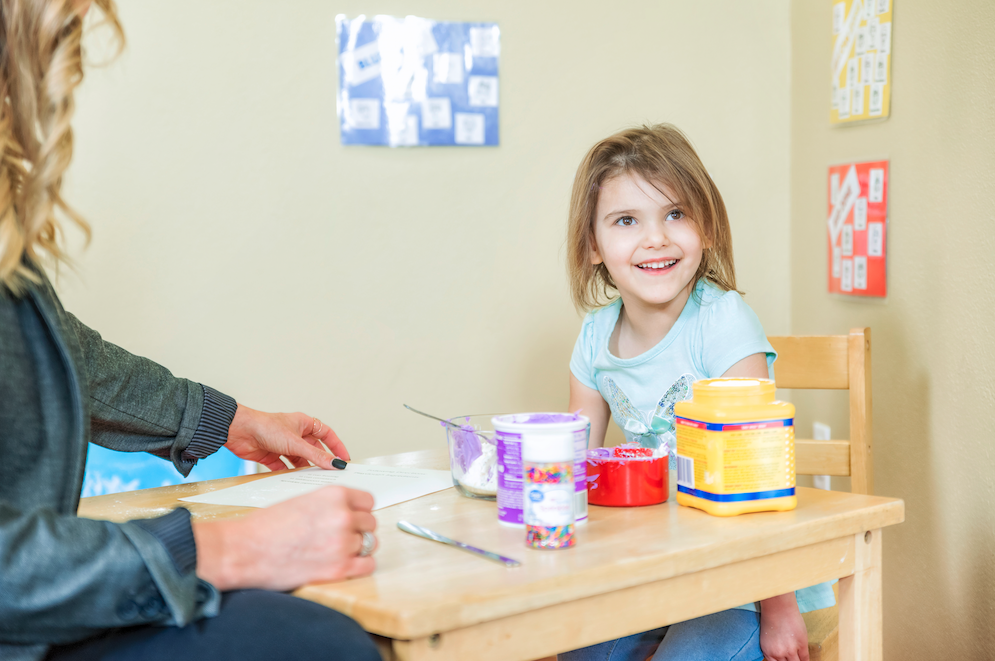Many of us look back on childhood fondly; the “good ol’ days” full of laughter and playing with our friends. While it seems like those times were just for fun, it turns out that we were likely learning more than we realized.
Haley Uphoff is a junior kindergarten teacher in Custer, but also a mom to a 4-year-old son and twin 14-year-old daughters. She studied early childhood education in college, and in her years as a teacher had seen how traditional school methods weren’t always working for every student.
“I had taught kindergarten for a couple years, and once in a while I’d get those kids that you could just tell weren’t ready, and it just kind of started to wear on me,” Haley says. “I kept thinking, if they don’t like school starting in kindergarten, it’s going to be a long 12 years. And really, what are we doing this for if not for them?”
That’s when she took a step back and really started to consider how to make education something her young students would not only enjoy, but look forward to. She started researching alternative ways to engage with them and discovered play-based learning.
Resetting the bar
With test scores and aptitude requirements climbing higher every year, we put more and more pressure on our children to be high achievers. After all, a 2-year-old who can write their name surely has a bright future ahead of them, right?
Not necessarily. In our rush to provide all children with the best chance of success, we’ve continually set the bar higher and higher. We require more of our youngest children than what they’re truly ready for, or even capable of. All children develop on their own individual timeline, which means some will be better at language skills, while others will be more advanced in gross motor skills. In fact, pushing activities on our children that they aren’t developmentally ready for may cause issues in the long run.
“I think it makes a difference for young kids to be able to have play-based learning,” Haley says. “For instance, we see a lot more ADHD in schools than we had seen in even the past 20 years, and if you think about it, we’re asking these young kids to sit and learn all day when they’re still wiggly little guys. We need to let them get out of their chairs and move around and play more.”
Follow their lead
Play-based learning is grounded in letting children explore their interests. The goal is to gently guide them without disrupting their creativity or innate curiosity. Haley focuses on hand-on activities with her kids, foregoing more formal materials like paper and pencils.
“A big part of this process for me has been taking a step back, and asking myself if the activities I’m doing with my students are developmentally appropriate,” Haley explains. “I did a lot of research, and even saw x-ray pictures comparing an adult hand to a 5-year-old’s, and I thought ‘oh, that’s why a pencil probably doesn’t make sense for them right now, but writing their name in shaving cream with a finger is more appropriate.’”


While play-based learning has changed her classroom, it’s also helped Haley reconsider how she interacts with her own kids on a daily basis.
“Play-based learning also made me realize the differences in my kids,” she says. “The girls were ready to sit down and do things like workbooks pretty early. But being able to step back helped me understand how each child is different, which gave me peace of mind with my son when he wasn’t doing the things his sisters were at the same age.”
Essential elements to play-based learning
- Let kids make their own decisions. It can be hard as parents to step back and let our kids take the reins, but that’s exactly what you need to do. When kids play based on their own wants and desires, they experience freedom of choice, but also begin to make connections between their choices and the consequences.
- Let play be spontaneous, not scripted. You can start out with a plan or activity, but allow your kid to change the rules or go off script. Play-based learning is about exploration, so go where your kids lead!
- Take the time to be engaged with play. All kids love to play, and they also crave connection with family members and friends in their life. Life is busy for all of us, but taking time to truly get on your kid’s level and immerse yourself in their world will benefit both of you.
WORDS: ASHLEY JOHNSON
PHOTOS: JESSE BROWN NELSON

